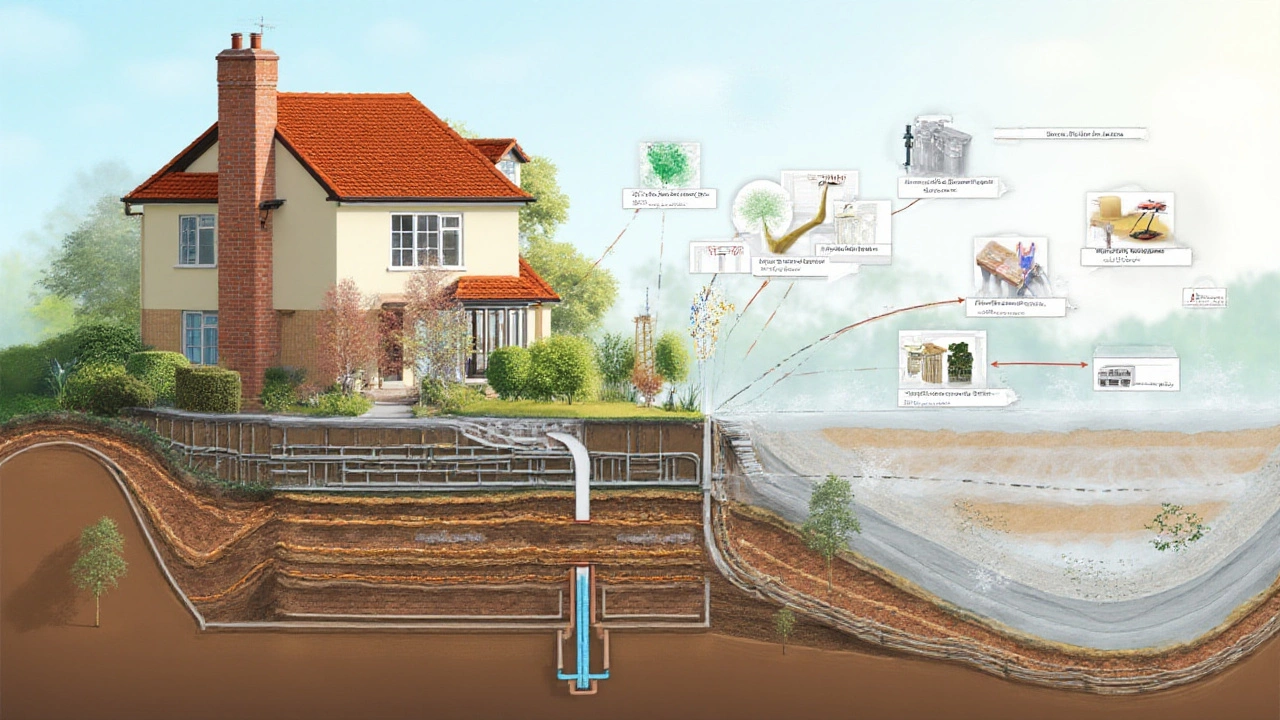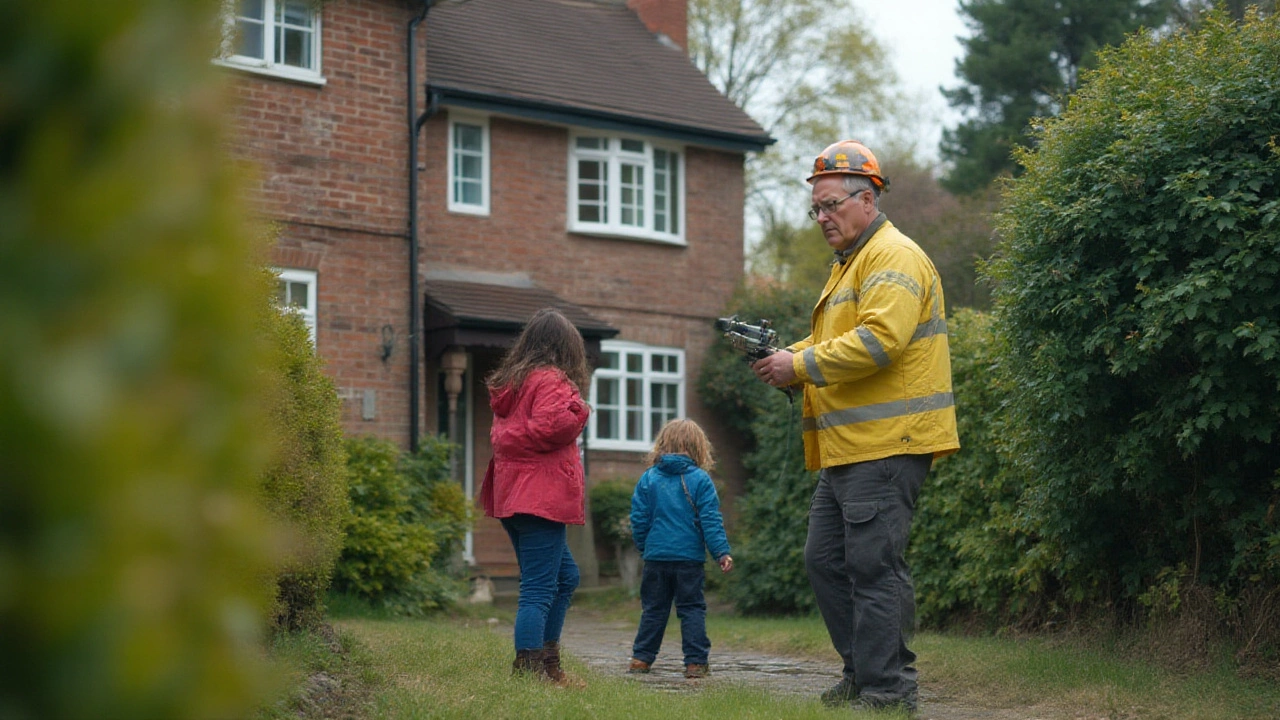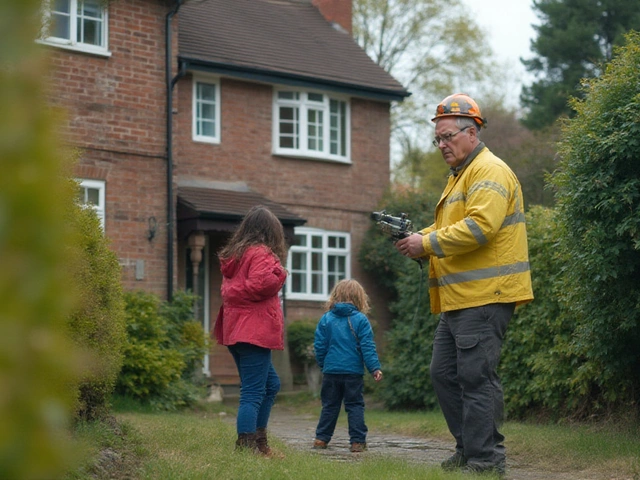Most folks think foundation trouble is something that happens to “other people.” Then, you spot a crack in your wall or a door that suddenly won’t close. Foundation repair instantly becomes the hot topic in your household. And you wonder: does any of this really work? Are these fixes just quick patches, or can they truly save your home from costly structural nightmares?
How Foundation Damage Starts and Why It Matters
It’s wild to think that tiny shifts in the dirt under your house can cause so much chaos, but that’s the honest truth about foundation problems. Plenty of homes in America—especially in cities with clay-rich soil like Dallas, Houston, Atlanta, and parts of California—face more risk. Soil type, tree roots, drainage, and even droughts or heavy rains play into this messy dance.
Here’s what often happens. When soil gets too wet, it expands, pushing up against your foundation. In dry spells or drought, it contracts and sinks. This cycle causes your foundation to shift and crack. A 2022 survey by the American Society of Civil Engineers found that 25% of homes in the US will experience some form of structural distress due to soil movement during their lifetimes. Seems huge, right?
It all matters because your foundation isn’t just concrete. It’s the thing holding every wall, floor, and roof beam steady. When the base of your home moves or cracks, you’re looking at a domino effect—jammed doors, sticking windows, uneven floors, and even plumbing leaks. People often ignore these early warning signs, thinking it’s just the house “settling.” That delay can mean repairs get more expensive. According to HomeAdvisor, early fixes may run under $2,000, while waiting can turn a small problem into a $20,000 nightmare.
The Science (and Reality) of Foundation Repair
So what does foundation repair actually do? When a contractor talks about "repairing" your foundation, they’re usually talking about one of several common methods. The goal is always to stabilize your house, ideally returning it to its original position.
Let’s break down the standard fixes:
- Piers and pilings: The most popular method. Steel or concrete piers are driven deep below your foundation, hitting solid soil or bedrock far beneath shifting clay. Your home’s weight transfers to these supports. There are variations, including push piers, helical piers, and drilled concrete piers.
- Slabjacking (mudjacking): If only certain sections are sinking, contractors pump a special cement slurry underneath to lift sunken spots back up. It’s faster and less invasive for small, targeted repairs.
- Sealants and polyurethane injections: For fine cracks, high-tech epoxies or poly materials are injected into cracks to keep water out and restore strength.
It’s not all magic, though. The process requires trained pros who understand why the damage happened. Choosing the wrong fix—say, slapping on sealant when your house is sliding off a hill—will only hide the problem for a while. Residents in places like the Gulf Coast, with super-dense clay soils, often need deep piers for anything to last.
Most foundation repair techniques have been refined for decades. Data shows good repairs can halt further movement for 30 years or more. Reputable companies often offer transferable lifetime warranties—that’s not just marketing! They’re confident enough in modern pier systems to stand behind the work long after you move out.
How about resale value? Nearly two-thirds of realtors in a 2023 National Association of Realtors survey said a documented foundation repair (with warranty and engineer’s report) neutralizes most buyer concerns. So, repairs don’t just work—they also protect your investment. But beware: shoddy repairs with no paperwork create more trouble than doing nothing.
| Repair Method | Average Cost (USD) | Expected Lifespan | Typical Warranty |
|---|---|---|---|
| Piers & Pilings | $3,500 - $15,000 | 30+ years | Lifetime/Transferable |
| Slabjacking/Mudjacking | $500 - $3,000 | 10-15 years | 5-10 years |
| Crack Injections | $250 - $800 | 5-10 years | Limited/5 years |

Does Foundation Repair Last? Real Results and What Can Go Wrong
Here’s a hard dose of honesty—foundation repair works, but only as much as the underlying soil allows. No fix is invincible if the causes aren’t handled. Picture this: you get brand new steel piers put in, but your gutter dumps water right at the base of your home, washing out the soil. Sooner or later, things will start moving again.
This is why top companies blend repairs with drainage fixes. Re-grading your yard, installing French drains, and keeping tree roots away from your foundation all matter just as much as the repair itself. Your home is a dynamic system, and ignoring any part leaves you at risk for a repeat headache.
Let’s talk about results. Most happy homeowners see these changes after a professional repair:
- Doors and windows operate smoothly.
- Cracks in walls stop growing.
- Floors level out, or at least stop sloping further.
- Plumbing leaks from shifting are halted.
There are limits, though. If the repair comes late in the game, cosmetic issues like popped tiles, ruined trim, or warped floors may need separate repair. Piers won’t close up those old cracks—they just stop the movement. Some cracks in brick or drywall might need patching, but if the gap stops growing, your home’s safe.
Problems happen when the wrong method gets used. For example, slabjacking doesn’t work well for major movement or homes built on expansive clay. Cheap “surface” fixes (like patching over cracked bricks) offer almost no real help. So, research and insist on a proper inspection. Ask for geotechnical soil analysis if your land is particularly tricky. Don’t just trust anyone with a van and a drill.
Warranties and documentation make all the difference. Good companies provide clear inspection reports, before/after measurements, and a warranty that actually sticks if you sell the house. That’s peace of mind—and it’s what separates lasting repairs from shady fly-by-nights. The foundation repair industry is regulated in some states, but not all, so do your homework. Texas, for example, has clear licensing rules; other states may allow almost anyone to call themselves a pro.
How to Spot Real Foundation Issues and What to Do Next
You can save thousands by catching early signs. A survey in 2024 by the National Foundation Repair Association reported that 70% of successful repairs started within one year of symptoms showing up. Most homeowners don’t act until things get much worse, so awareness is everything.
Keep an eye out for:
- Cracks wider than 1/8 inch, especially stair-step cracks in brick or block walls
- Doors or windows that won’t operate despite hinge or latch adjustments
- Uneven floors (rolling a marble can help reveal a slope!)
- Gaps around window frames or exterior doors
- Diagonally cracked drywall, especially above doors/windows
- Musty smells or pooling water in crawl spaces or basements
What should you do next? First, get a trusted structural engineer—someone who doesn’t sell repairs directly—to take a look. This inspection costs money ($400-$800), but it could save you five figures and a ton of stress. Only after this objective assessment should you start calling repair companies.
When comparing contractors, make sure you:
- Check for local licenses and certifications
- Read real customer reviews
- Ask for at least three repair quotes (reputable shops will do a thorough on-site evaluation; instant phone quotes are a red flag)
- See proof of warranty and ask exactly what it covers
- Get everything—scope, price, timeline, warranty—in writing
If water is pooling close to your foundation, put quick fixes in place right away—redirect downspouts, keep gutters clear, or even grab some temporary drainpipe extensions. You’d be surprised how much damage you can prevent with a simple $10 hardware store solution.
Don’t wait for that next big rainstorm or drought. Houses rarely "settle" nicely on their own. When you spot the signs, trust your gut and act quick—your home (and bank account) will thank you.





